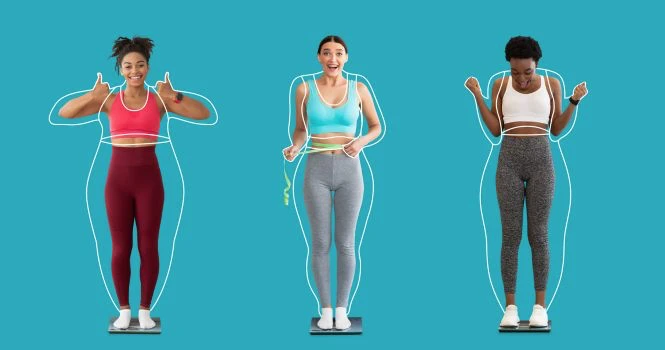
Maintaining the right height to weight proportion is crucial for a healthy and balanced lifestyle. A proper balance between height and weight not only contributes to physical fitness but also plays a significant role in preventing chronic diseases. Tools such as a height weight chart or weight calculator are often used to determine if an individual falls within the recommended range for their body type.
Understanding how your weight compares to your height is a good starting point for assessing overall health. The relationship between the two affects your Body Mass Index (BMI), a widely accepted standard used to evaluate body fat. Let’s explore how this proportion is determined, how to interpret height and weight values, and how to use calculators and charts effectively.
Why height to weight ratio matters
The correlation between your height and weight impacts your cardiovascular health, metabolism, joint functionality, and even your mental well-being. When your body maintains an ideal ratio, you’re less likely to face conditions such as hypertension, diabetes, or obesity-related complications. It also supports better posture, increased mobility, improved sleep quality, and more efficient digestion. This balance contributes to a stronger immune system, enhanced endurance, and greater overall energy.
Conversely, an imbalance — being overweight or underweight for your height — can strain vital organs, reduce energy levels, and lead to musculoskeletal disorders. It may also result in hormonal imbalances, increased inflammation, and greater vulnerability to chronic diseases. Over time, this can affect your emotional health, reduce self-confidence, and impact quality of life.
What is the height weight chart?
A height weight chart is a tabular guide used to determine whether a person’s body weight is within the ideal range for their height. It is differentiated based on age, gender, and sometimes body frame (small, medium, or large).
Here’s a simplified sample for adult males and females:
For adult males:
|
Height (cm) |
Ideal Weight (kg) |
|
152 |
50 – 55 |
|
160 |
56 – 61 |
|
168 |
63 – 68 |
|
175 |
68 – 74 |
|
183 |
74 – 80 |
For adult females:
|
Height (cm) |
Ideal Weight (kg) |
|
152 |
46 – 52 |
|
160 |
52 – 58 |
|
168 |
58 – 65 |
|
175 |
65 – 71 |
|
183 |
70 – 77 |
These values may vary slightly based on body composition, lifestyle, and ethnicity. Charts such as these are typically used for reference and are often paired with BMI or weight calculator results for better accuracy.
Using a weight calculator
A weight calculator provides a more tailored estimate of your ideal weight range. These calculators often ask for inputs such as height, age, sex, and activity level. Some may also consider waist circumference or muscle-to-fat ratio for a more precise outcome.
The most common metric it provides is BMI, calculated as:
BMI = Weight (kg) / Height (m²)
- Below 18.5: Underweight
- 18.5 to 24.9: Normal weight
- 25 to 29.9: Overweight
- 30 and above: Obese
While BMI is widely used, it doesn’t distinguish between fat and muscle, so fitness professionals sometimes use additional methods for athletes or individuals with high muscle mass.
Factors influencing ideal body weight
1. Age– Metabolism slows with age, which may affect ideal body weight.
2. Gender– Men and women naturally have different body fat percentages.
3. Muscle Mass – Muscle is denser than fat, affecting weight without indicating poor health.
4. Genetics– Some individuals may be predisposed to carry more or less weight.
5. Activity Level – Active people tend to have better lean mass ratios.
Risks of ignoring height to weight proportion
Ignoring the balance between your height and weight can lead to several health issues:
- Underweight risks: Weakened immune system, fertility issues, anaemia, fatigue.
- Overweight risks: Diabetes, heart disease, joint pain, respiratory issues.
Being aware of your ideal proportion helps you maintain not just physical aesthetics but also internal well-being.
Tips to maintain a healthy ratio
- Eat a balanced diet rich in fibre, lean protein, complex carbs, and healthy fats.
- Exercise regularly with a mix of cardio, strength training, and flexibility workouts.
- Monitor weight every few weeks and compare against your height using charts or a calculator.
- Stay hydrated as water aids in metabolic processes and weight maintenance.
- Get regular check-ups to monitor cholesterol, blood sugar, and other health metrics.
Importance of body composition over weight alone
While charts and calculators are helpful, they don’t show the whole picture. Body composition — the ratio of fat to muscle — is equally vital. Two individuals with the same BMI might have completely different health profiles depending on their fat distribution.
Measuring waist-to-hip ratio or using bioelectrical impedance devices (common in gyms and clinics) can help paint a clearer picture of one’s actual health status.
Conclusion
Maintaining the ideal height to weight proportion is a cornerstone of healthy living. Tools such as a height weight chart or a weight calculator can assist you in evaluating where you stand and what adjustments may be necessary. Rather than chasing numbers on a scale, focus on achieving balance through nutrition, exercise, and regular monitoring. By aligning your body weight to your height, you create a foundation for long-term wellness and vitality.







